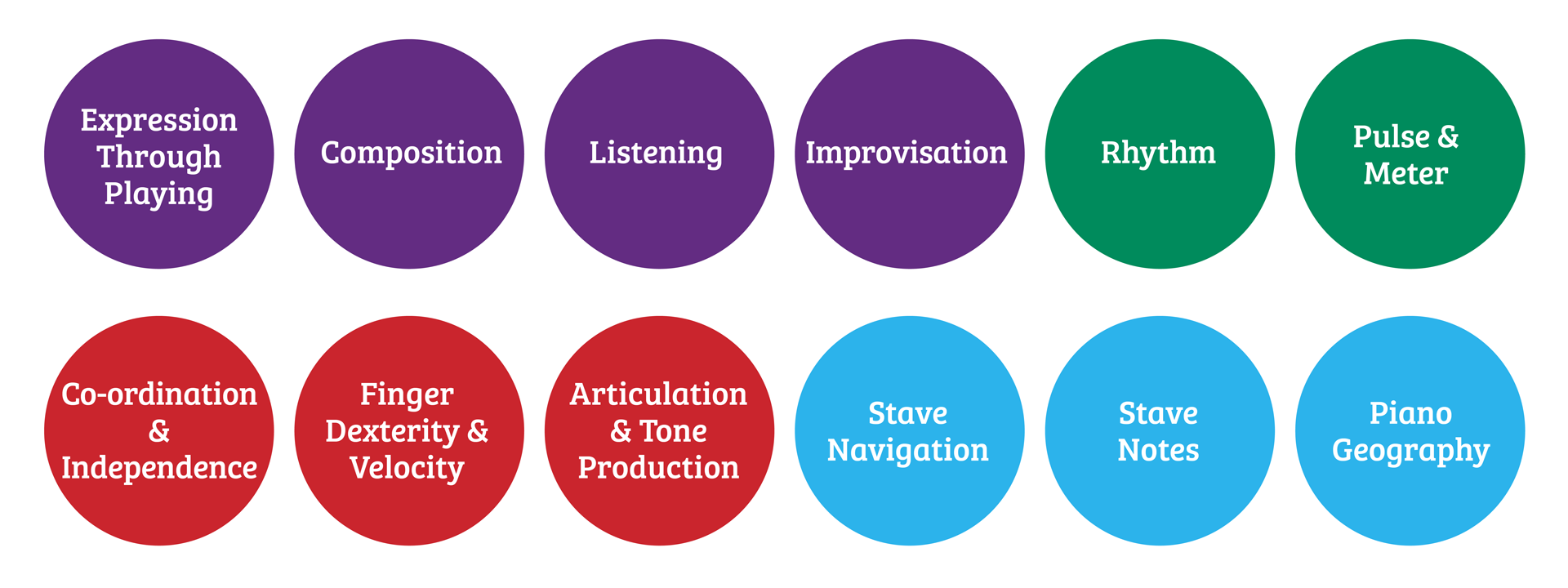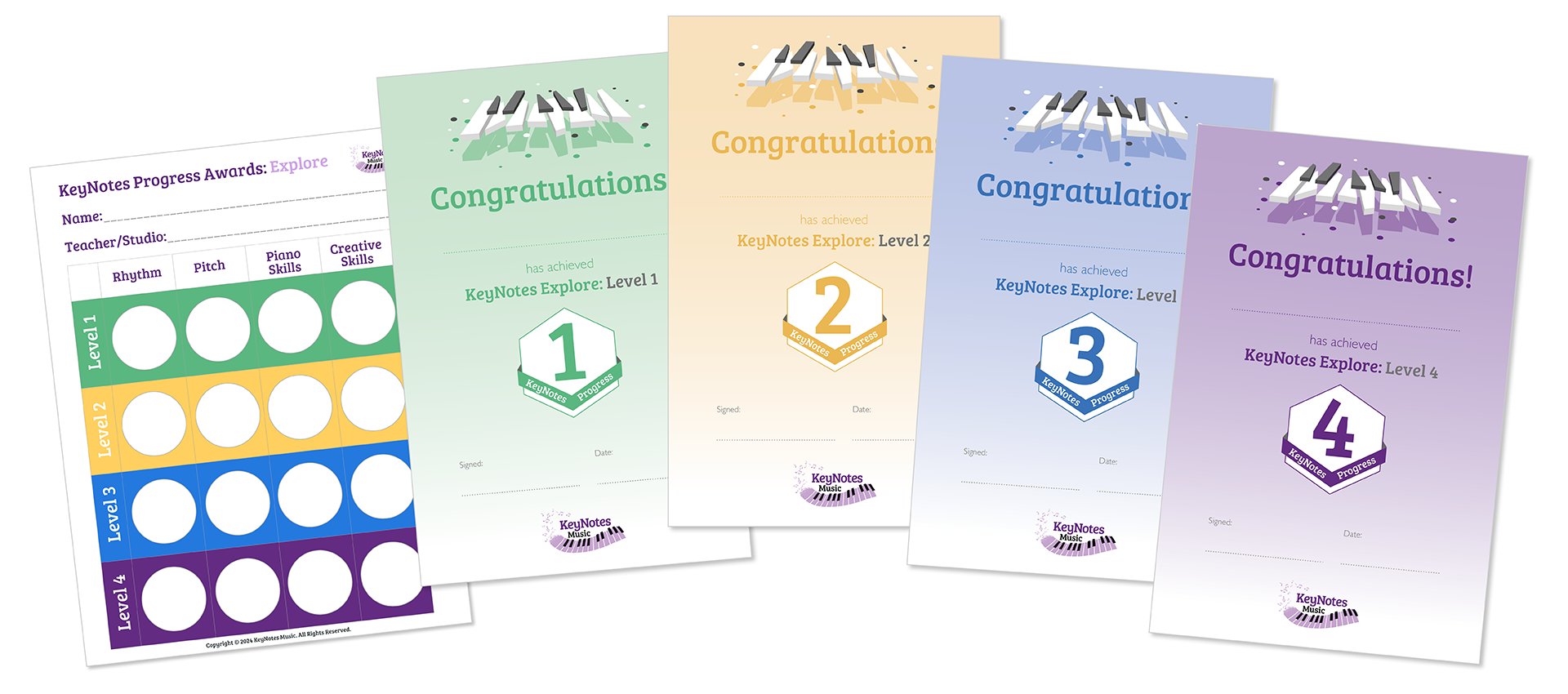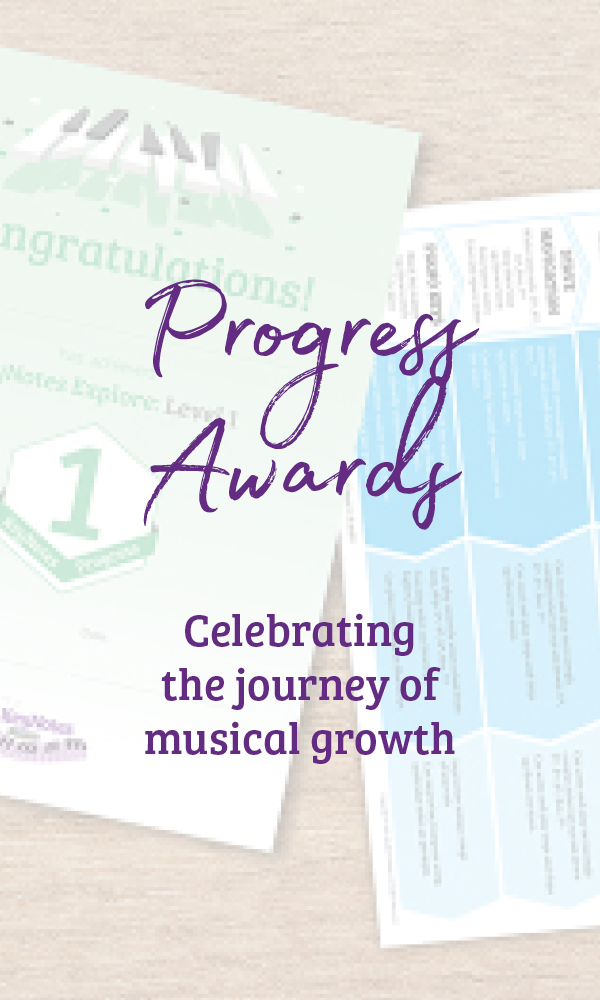Piano Competencies:
The Skills and Concepts

Rhythm & Meter
-
Sense of inner pulse and awareness of tempo changes
-
Hearing, copying, creating, reading and writing rhythm patterns
-
Understanding simple and compound time signatures
-
Recognising rhythmic features in different musical styles
Pitch
-
Identifying higher/lower sounds and black/white key patterns
- Keyboard geography and letter names
-
Steps and skips, then wider intervals, on piano and staff
-
Reading and writing notes across the staff (including ledger lines)
Piano Skills
Students build healthy technique, dexterity, and control at the instrument. They develop independence of hands, coordination, fingering accuracy, and fluency across varied hand positions - ultimately applying these skills confidently in performance.
Key elements include:
- Technique, alignment, and posture
- Finger dexterity, fingering and wrist movement, rotation and flexibility and arm weight
- Independent hands, parallel playing, and chords in various formats
- Articulation and tone control (legato, staccato, phrasing)
Expressive & Creative Skills
Students learn how music communicates ideas. They first recognise expressive elements, then use them in their playing, and eventually create music that shows intention - through improvisation, composition, and interpretation.
Key elements include:
- Listening for expressive, programmatic and stylistic features
- Using dynamics, articulation, and tempo changes
- Echoing and improvising simple ideas
- Composing and performing with character and purpose

A Pathway That Makes Progress Visible
Each area includes clear developmental steps that guide teachers in supporting every learner — while recognising the different rates at which skills emerge.
Students are assessed holistically, with progress acknowledged as they reach new milestones within these skill areas. This allows them to see how far they’ve come, and where they are growing next.
Progress Awards can be celebrated within lessons and recognised formally through certificates or studio-based displays — giving students a sense of achievement that is motivational, not stressful.

Why this matters
✔ Shows families the value of group learning and the breadth of skills gained
✔ Encourages all students — not just fast readers or performers
✔ Reinforces KeyNotes’ spiral curriculum structure



